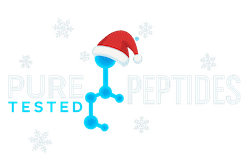NAD+ (Nicotinamide Adenine Dinucleotide) — Mechanisms of Action for Research
Important: This page is for scientific and educational purposes only. It does not recommend any treatment, usage, or dosing. Content is focused on mechanisms of action and published research findings. Products referenced here are for laboratory research use only.
What is NAD+?
NAD+ (nicotinamide adenine dinucleotide) is a ubiquitous cellular coenzyme that cycles between oxidized (NAD+) and reduced (NADH) forms. Although not a peptide, NAD+ is often discussed alongside “research peptides” because of its central role in cellular bioenergetics and signaling pathways relevant to many experimental systems.
Core NAD+ Mechanisms of Action
1) Redox Cofactor in Energy Metabolism
NAD+ accepts hydride equivalents in glycolysis, the tricarboxylic acid (TCA) cycle, and fatty-acid oxidation to form NADH, which then donates electrons to the mitochondrial electron transport chain. The NAD+/NADH ratio is a key metabolic set-point that influences flux through multiple pathways and ATP production.
2) Substrate for NAD+-Consuming Enzymes
- Sirtuins (SIRT1–7): NAD+-dependent deacylases that modulate protein acetylation states, impacting transcription, mitochondrial function, and stress responses.
- PARPs (e.g., PARP1): Poly(ADP-ribose) polymerases that use NAD+ to form ADP-ribose chains in response to DNA damage, facilitating chromatin remodeling and repair complex recruitment.
- CD38/CD157: NADases that generate second messengers such as cADPR and NAADP, relevant to intracellular calcium signaling and immune-cell function.
3) Compartmentalization & Homeostasis
Cells maintain partially distinct NAD+ pools in the cytosol, nucleus, and mitochondria. Shuttles (e.g., malate–aspartate) balance redox equivalents, while local NAD+ availability is continually shaped by synthesis and consumption. Enzymes like NMNAT isoforms support compartment-specific NAD+ synthesis, and overall homeostasis reflects the balance of production versus demand by NAD+-consuming enzymes.
4) Biosynthesis Pathways
- Salvage pathway: Recovers NAD+ primarily from nicotinamide via the rate-limiting enzyme nicotinamide phosphoribosyltransferase (NAMPT), producing NMN and then NAD+.
- Preiss–Handler pathway: Converts nicotinic acid to NAD+ via NAPRT → NAMN → NAAD → NAD+.
- De novo pathway: Builds NAD+ from tryptophan through the kynurenine route to quinolinic acid, then to NAMN and onward to NAD+.
5) Experimental Observations in the Literature
Peer-reviewed work describes NAD+ as a central node linking cellular energy status to chromatin state, DNA repair, mitochondrial signaling, and immune function. Modulating NAD+ availability (e.g., via salvage pathway enzymes or NADases) is an active research area across cell biology and metabolism.
Promising Areas of NAD+ Research (No Medical Claims)
- Redox & mitochondrial signaling: Exploring how NAD+/NADH ratios and mitochondrial stress responses affect cellular adaptation.
- DNA repair biology: Studying PARP-dependent ADP-ribosylation and its impact on chromatin dynamics and genome maintenance.
- Immune and calcium signaling: Defining roles for CD38/CD157-derived messengers (e.g., cADPR, NAADP) in immune-cell function and Ca2+ mobilization.
- Pathway targeting: Investigating NAMPT, NMNATs, and NADases as levers to interrogate NAD+ flux in different compartments and contexts.
Note: These are mechanistic research directions only—no efficacy or health benefit is claimed.
NAD+ 500 mg — Research Material
For laboratories that require NAD+ as a standard or for in-house assay development, Pure Tested Peptides offers NAD+ 500 mg. This listing is intended strictly for controlled, IRB/IACUC-compliant, or in-vitro research workflows. No directions for use, dosing, or clinical claims are provided or implied.
Selected Peer-Reviewed References
Compliance & Disclaimer
This content is provided for educational and research-oriented audiences. It refrains from recommending any treatment, extraneous usage, or regimens and avoids claims of health benefits. Any materials referenced are intended for research use only.
